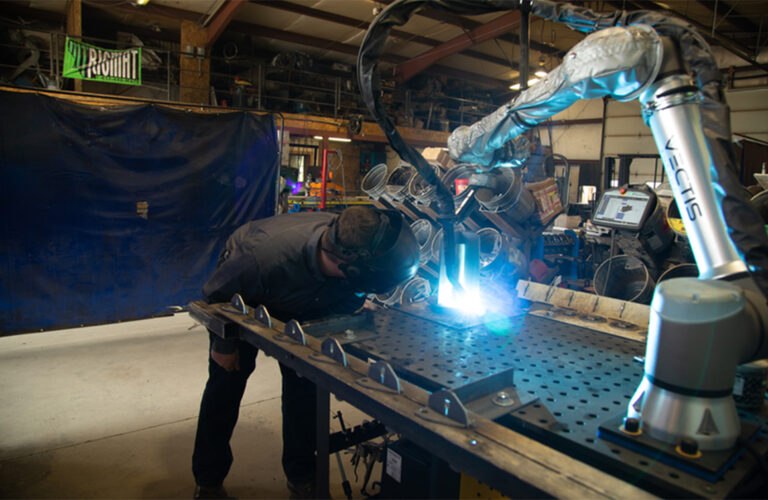Italian Reflections on Automation
Leaders in research, education, and business have gathered in Italy to talk about the future of automation. Gloria Sormani, the country manager for Italy at Universal Robots, provides more information.
The first cobot had a vision for the future of automation when it was shown in 2008. a society in which humans and robots collaborate rather than the other way around. A select group of robotics specialists from the fields of research, education, and industry gathered in Italy for the General State of Collaborative Robotics, a series of events that began in November 2020 and ran until May 2022, to examine how far cobots have progressed since that time. The concepts discussed at these gatherings served as the basis for a written Charter of Ideas on Collaborative Robotics, a compilation of views on the visions, experiences, and potentials of cobots, was built on the concepts given at these meetings.
AT THE CENTER OF THE PRODUCTION FLOOR WERE PEOPLE
Cobots were developed to provide flexible automation and to enhance how people perform their jobs. Numerous businesses report improved working conditions as well as a redistribution of jobs since these robotic coworkers entered the manufacturing floors. As a result, discussions concerning cobots have evolved into inquiries into the new functions that people will perform on the factory floor and an effort to determine the skills they need to have in order to succeed in industry 5.0.
Cobots, in other words, put people at the center of the manufacturing process. The prior operator is free to use their grasp of the industrial system and apply their talents in problem-solving and analytical thinking to the entire process when the work of transporting heavy boxes from a conveyor belt to a pallet is transferred to a cobot. This collaborative manufacturing vision will only be realized by reevaluating positions, redefining functions, creating training programs, and modifying the vast amount of knowledge that both operators and management must acquire.
TRAINING THE FUTURE WORKFORCE TO WORK WITH ROBOTS SIDE BY SIDE
The project’s automation experts set out to create a plan for preparing people to work alongside robots. Despite the fact that more businesses are utilizing robots, the subject is still very briefly covered in lessons. Therefore, one of the conclusions was that the educational system’s design must incorporate robotics.
A large number of specialists collaborated to develop a plan for the Italian educational system. Their proposals included making expenditures to increase the connection between schools and industry as well as strengthening STEM-oriented disciplines starting in the earliest school years. Finally, given that they provide the groundwork for their children’s education, families should be made aware of the new abilities demanded by modern technology.
CERTIFICATION OF CURRENT EMPLOYEES TO WORK WITH COBOTS
Training has figured prominently in trade unions’ thoughts on the employees who are currently employed on the industrial floor. In order to increase operator competency, Francesco Messano of the Italian Union of Metalworkers UILM proposed making collaborative robotics training essential by including it into the national agreement for metalworkers.
This final thought also serves as a suitable echo of the Charter of Collaborative Robotics and the ethos of this text. Because cobots do just this, and our approach would provide workers with the knowledge they need to keep up with technological changes in the workplace. On the one hand, they serve as a catalyst for redefining job duties, enabling people to acquire more valued abilities. On the other hand, they gave people back control over the industrial process and placed them at its core. “Empowering People” was one of Universal Robots’ initial campaign slogans, and that is still what cobots do today.
The complete Charter of Ideas for Collaborative Robots can be viewed here if you’re interested in reading it. The General State of Collaborative Robotics is a video series that you can watch on demand if you want to learn more about the interviews that inspired the concepts in this article. Please be aware that the original text is in Italian.

